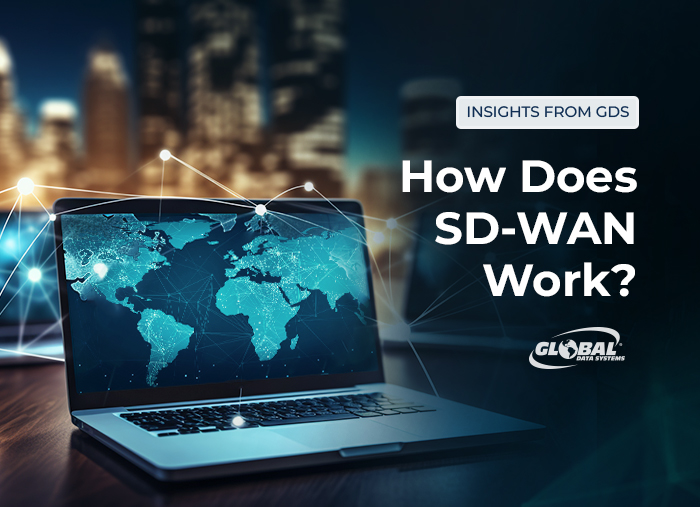How Does SD-WAN Work?
Software-defined wide-area networks (SD-WANs) are effective tools for connecting increasingly distributed offices, data centers, cloud services and remote workers. Nevertheless, the technology remains something of a mystery to many business decision-makers. More than 30 percent of respondents to a 2022 survey cited a lack of knowledge about the technology as a key barrier to adoption.

Some of the confusion stems from the continuous evolution of the technology over the past decade, with vendors offering a variety of solutions with diverse features and terminology. As a result, implementation can involve a fairly steep learning curve. In this post, we’ll attempt to demystify SD-WAN.
SD-WAN technology enables organizations to build and manage efficient, flexible and secure wide-area networks using software-based controls and policies. It works by creating a separate and independent overlay network on top of the physical network. That enables additional functionalities and services without requiring changes to the underlying hardware.
The SD-WAN Controller Advantage
An independent software controller plays a central role in controlling and managing the overlay network by coordinating connectivity among all physical and virtual devices across the WAN. With a unified view of the entire network, administrators can configure, monitor and troubleshoot everything from a single console. This eliminates the need to manually configure devices at remote locations, which reduces errors and saves time.
SD-WAN technology enables efficient, flexible, and secure wide-area network management through software-based controls and policies.
The controller also enables one of SD-WAN’s key features — the ability to blend multiple transport types such as MPLS, broadband Internet, cellular and satellite to minimize network congestion. Using predefined policies and criteria, the controller intelligently directs traffic across the most ideal paths. It collects metrics related to network conditions such as latency, jitter, packet loss and bandwidth for each transport link. These metrics are used to assess the quality and reliability of the available paths.
The controller can also adapt to changing network conditions. In the event of link failures or degraded performance, it can automatically reroute traffic to alternate, healthy links. This failover mechanism ensures high availability and reliability for critical applications.
Another Vital Element of SD-WAN Capabilities
Application-aware routing is another critical aspect of SD-WAN functionality. Legacy WANs with traditional routing systems treat all traffic equally. That creates problems with diverse in-house, web and cloud applications contending for network resources. In an SD-WAN, the controller identifies and classifies apps based on a variety of characteristics and then applies optimization techniques to ensure peak performance. For instance, it can identify whether you have enough available bandwidth to support latency-sensitive voice and video applications. If not, the solution can throttle less-sensitive apps to carve out sufficient bandwidth for high-priority workloads.
SD-WAN Securely Integrates with Cloud Services
Many SD-WAN solutions also provide direct integration with cloud services, allowing the controller to optimize traffic paths to and from cloud resources. This involves considering the proximity of the cloud service and dynamically selecting the best transport links to reach the cloud.
With more data traversing public Internet connections, organizations must be able to ensure the secure transmission of data. SD-WAN solutions allow administrators to centrally define and enforce security policies that specify rules for traffic prioritization, application access and threat prevention. Most solutions incorporate encryption and other security controls or integrate with existing controls to ensure data integrity and confidentiality across the network.
An increased reliance on remote network access and cloud connectivity is changing network usage patterns in ways that push legacy WAN architectures to their limits. SD-WAN solutions address those limitations with centralized control and increased automation.
Leverage SD-WAN Technology with GDS
Give us a call to learn more about using SD-WAN to address your evolving network requirements. Together, let's build an efficient, flexible, and secure network tailored to your organization's unique needs.
Benefits of Managed IT Services from Global Data Systems
- Strategic Managed IT: We help you solve your technology related business problems.
- Connectivity: We get you reliable, secure connectivity anywhere in the western hemisphere in 48 hours.
- Support: When you need help simply call our 24x7x365 support number.
- Billing: Instead of managing hundreds of vendors - get one, easy to read bill from GDS.
Contact Managed Services Provider, Global Data Systems >

